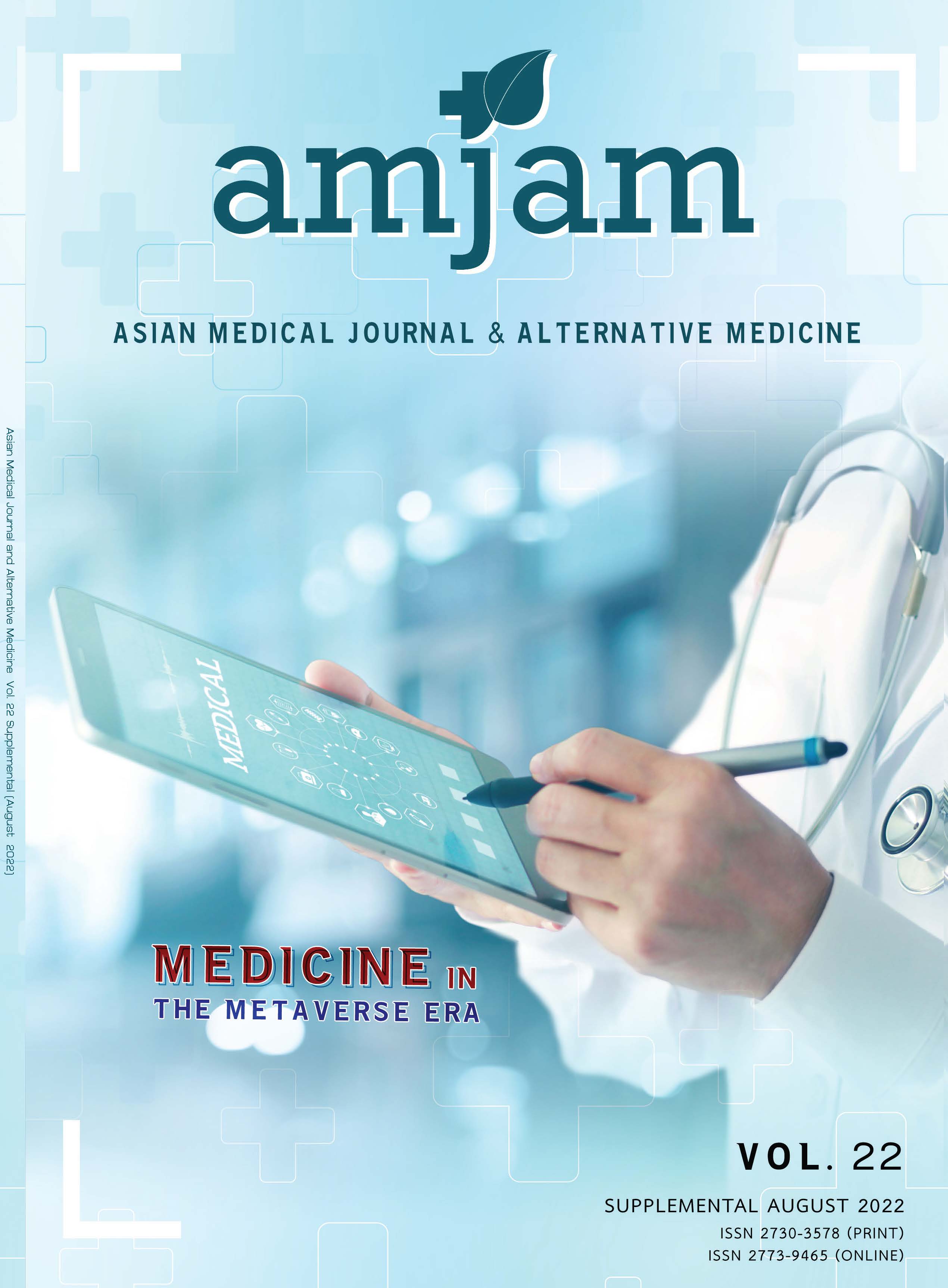Real-life COVID-19 Vaccine Effectiveness and Risk Factors of COVID-19 Infection During Omicron Variant Epidemic in Thailand
DOI:
https://doi.org/10.14456/2022s10704Keywords:
COVID-19, Omicron variant, Real-life vaccine effectiveness, Risk factor, ThailandAbstract
Introduction: Data of real-life vaccine effectiveness (VE) and risk factors of COVID-19 infection during Omicron variant epidemic in Thailand are limited.
Methods: A test-negative case-control design was conducted to assess the VE for each dose of vaccination during the omicron variant epidemic (1 Jan to 30 April 2022). Available vaccine regimensin Thailand mainly consisted of inactivated vaccine (CoronaVac, SV), viral vector vaccine (ChAdOx1,AZ), and mRNAvaccine (BNT162b2, PF and Spikevax, MDN). All patients under investigation (PUI), aged more than 5 years, presenting at Thammasat University (TU) hospital for nasopharyngeal real-time polymerase chain reaction (RT-PCR) testing were prospectively enrolled and followed-up for disease development. Cases were categorized into asymptomatic, mild, moderate, severe, and critical diseases according to the World Health Organization criteria. Multivariable logistic regression was used to determine the VE of vaccination and independent risk factors associated with the infection.
Results: Of 7,954 PUI, there were 3,154 cases of COVID-19 infection with 4.9% having at least moderate severity. Of all 14 fatal cases, 13 deaths were unvaccinated and 11 deaths were elderly. The VE for COVID-19 prevention among persons receiving two, three and four doses of vaccine were 48% (95%CI: 35% to 59%), 59% (95%CI: 48% to 68%) and 69% (95%CI: 59% to 76%) respectively. The VE for COVID-19 prevention among persons who receiving one booster of viral vector vaccine, one booster of mRNA vaccine, and second booster of mRNA vaccine were 65% (95%CI: 52% to 73%), 58% (95%CI: 47% to 67%), and 70% (95%CI: 67% to 77%) respectively. Concerning prevention of at least moderate severity infection, the VE among persons receiving two, three and four doses of vaccine were 70% (95%CI: 54% to 81%), 79% (95%CI: 67% to 87%) and 82% (95%CI: 66% to 91%) respectively. Independent risk factors of COVID-19 infection beyond vaccination were non-healthcare worker, elderly (> 65 years), underlying chronic disease, and lower education,and male with the adjusted odds ratio of 2.87 (P < .001), 2.31 (P < .001), 1.33 (P < .001), 1.33 (P < .001), and 1.14 (P = .012) respectively. Independent risk factors of COVID-19 infection (P < .001) were elderly, non-healthcare worker, underlying chronic disease and lower education with the adjusted odds ratio of 6.23, 3.08, 3.06, and 1.57, respectively.
Conclusions: During the omicron variant epidemic, the VE to prevent COVID-19 infection is markedly reduced. The VE of booster dose vaccination was adequate to prevent at least moderate severity infection. Independent risk factors of COVID-19 severity beyond vaccination were elderly, non-healthcare worker, underlying chronic disease, and low education level.
Downloads
Downloads
Published
How to Cite
Issue
Section
License

This work is licensed under a Creative Commons Attribution-NonCommercial-NoDerivatives 4.0 International License.




